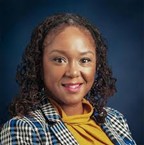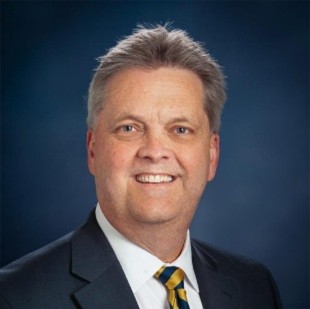We transform lives by providing an accessible education in an environment where faculty and staff care and are dedicated to the success of all our students throughout their academic career. We empower our students, faculty and staff to become the best version of themselves by supporting their continuous development and growth. Fueled by our resilience, tenacity, and talents, we strengthen the rural and urban communities we serve. Innovation is the heartbeat of East Texas A&M University, with career preparedness as a cornerstone of our educational mission. We are committed to ensuring our graduates are well-prepared for the challenges and opportunities that lie ahead. Through robust career exploration, internships, industry partnerships, and skill development initiatives, we bridge the gap between academia and the workplace.
Click here to read the complete Mission, Vision and Strategic Goals, or visit www.tamuc.edu/strategic-plan
Governance of East Texas A&M University resides with the Board of Regents of the Texas A&M University System, the chancellor, the university president, and designated university officers.
Texas A&M University System
The Board of Regents is the governing body for the A&M System. Composed of lay members appointed by the Governor of Texas, the board oversees the administration and sets policy direction for the system and its member universities and agencies. The chancellor serves as chief executive officer of the A&M System, under the direction of the Board of Regents. The chancellor reviews guidelines and makes recommendations to the board. The board delegates operational control of East Texas A&M University to the university president.
East Texas A&M University
 |
Dr. Mark Rudin The President of East Texas A&M University serves as the university’s chief executive officer. The president follows Board of Regents policies and university procedures, and in turn, delegates certain authority to other officers of the university. These officers are: |
 |
Dr. Tammi Vacha-Haase Provost and Vice President for Academic Affairs: provides leadership and guidance to the academic colleges and divisions in the areas of research, instruction, scholarly activity, and globalization. |
 |
Nechell Bonds, M.Ed Vice President for Enrollment Management: oversees Office of Undergraduate Admissions, Registrar, Financial Aid and Scholarships, Veterans and Military Services, New Student and Family Programs, Enrollment Call Center, and Money Management Center. |
 |
Tina Livingston, MBA Vice President for Finance and Administration: oversees management of the university’s facilities and finances. |
 |
Devin Girod Vice President for Philanthropy and Engagement: oversees alumni relations and engagement, major gifts, planned giving, annual giving, and operations for fundraising efforts. |
 |
Dr. Brent Donham Vice President for Research and Economic Development: oversees the Office of Sponsored Programs, research compliance, economic development efforts, and industry relations. |
 |
Judy Sackfield Vice President for Student Affairs: oversees the Division of Student Affairs, which provides support services to ensure students have access to a successful educational experience that prepares them to be life-long learners and leaders. |
The university’s Organizational Charts outline the leadership structure of the university at large and within the university’s administrative offices.
Click here to view all university organizational charts.
Faculty Senate: The Faculty Senate is an elected body of faculty members making policy recommendations to the university president. It serves as the voice of the faculty of East Texas A&M, representing the interests, opinions, and recommendations of all faculty members regarding the administration and educational function of the university. The Faculty Senate is composed of one member elected by the library and by each academic department of the university. Any member of the faculty who holds the rank of instructor or higher and who has completed two academic years of full-time service to the university at the time he or she takes office is eligible for election to the Faculty Senate. Elections take place in the spring semester prior to a seated senator’s term expiration. Senators serve for a three-year term, beginning on the first day of the fall semester following election.
Visit the Faculty Senate Webpage for more information.
ETAMU Procedure 12.04.99.R0.01 Constitution of the Faculty Senate
Graduate Council: The Graduate Council formulates and recommends policies and procedures related to graduate education to the president of the university. Faculty membership on the Graduate Council is limited to members of the graduate faculty*; three elected members from each of the following colleges: Business, Education and Human Services, Science and Engineering, and Humanities, Social Sciences, and Arts; and one elected member from the College of Agricultural Sciences and Natural Resources. Student membership includes one elected student at the master's/specialist level and one at the doctoral level. The dean of the Graduate School and the associate dean of the Graduate School serve as chair and vice chair, respectively.
Visit the Graduate Council Webpage for more information.
University Procedure 12.04.99.R0.03 The Graduate Council
Standing Committees: In addition to the Faculty Senate and the Graduate Council, there are numerous opportunities for faculty members to serve on university committees and councils that will make a positive impact on university life. Membership on many is open to all faculty interested in serving, however, some have specific criteria for membership (presidential appointment or through a nomination and election process). Each year during the summer preceding the start of the next academic year, an announcement is made from the Office of the President, via the faculty and staff listserv, informing faculty about opportunities to serve. Visit the Committees and Councils webpage for lists of current chairs and members.
East Texas A&M University is the fifth oldest institution of higher learning in the state. One of the largest universities in the prestigious Texas A&M University System, the institution was established in1889 and began as East Texas Normal College. It was during this time that founder William Leonidas Mayo opened the doors to a one-building campus in Cooper, Texas and established as a creed, “Ceaseless Industry, Fearless Investigation, Unfettered Thought, and Unselfish Service to Others.” This motto continues today and is integral to the university’s mission, vision, and guiding principles.
The institution's history of dynamic change began in 1894 when the original campus was destroyed by fire and "Mayo's College" moved to Commerce. When the state of Texas purchased the campus in 1917, the name changed to East Texas State Normal College. In 1923, the school was renamed East Texas State Teachers College. Graduate education entered the curriculum in 1935, and in 1957 the state legislature, recognizing that the purpose of the institution had broadened from teacher education alone, changed the name to East Texas State College. Following the inauguration of the first doctoral program in 1962, the name was changed to East Texas State University.
In 1996, the institution entered The Texas A&M University System and became Texas A&M University-Commerce. In November 2024, we changed our name from Texas A&M University-Commerce to East Texas A&M University. Our new name celebrates our East Texas heritage and connects us to the communities we serve. The university currently has off-campus locations in Dallas, Corsicana, Mesquite, McKinney, and Bryan. In addition, through state-of-the-art telecommunications and internet-based instruction, the university meets the undergraduate, graduate, and professional needs of the citizens of Northeast Texas and beyond. The university offers over 140 total areas of study at the undergraduate, master’s, and doctoral levels.
In an environment well-suited to study and inclusion, East Texas A&M is a place where students enjoy productive relationships with professors, have opportunities to become leaders on campus, and become actively involved in campus life with a choice of over 120 clubs and organizations. The Honors College provides a college experience for the best and brightest that is substantially offset by scholarships for tuition, fees, books and meals. Fifty qualifying students are chosen each year to receive Honors College scholarships. East Texas A&M is an emerging Hispanic Serving Institution (HSI) committed to upholding the mission of the university to recruit, retain, and support all students in their common endeavor toward degree completion.
East Texas A&M is comprised of six colleges. Click on each link below to learn more.
In addition, ETAMU hosts the Honors College and Graduate School. Click below for more information.
For more information about Colleges and Schools, click here or visit www.tamuc.edu/colleges/
ETAMU offers programs at six campuses and locations across Northeast Texas including Commerce, Dallas, McKinney, Mesquite, Bryan and Corsicana. For campus locations and information about programs offered at each campus, click here or visit www.tamuc.edu/locations/.
East Texas A&M offers a campus map in two formats. For a traditional, printable campus map, click here. For an interactive campus map, click here or visit www.tamuc.edu/map/
The Velma K. Waters Library’s provides an accessible and collaborative environment for research, learning, and innovation. The library provides learning resources, services, and collections to all students, faculty and staff regardless of location.
For more information including a directory of library staff and resources, visit www.tamuc.edu/library/.
East Texas A&M University hosts a number of events from athletics and intramurals to art, music, recreation and planetarium events. Click here to access the Community Calendar so you can stay up-to-date, or to post your event.
The East Texas A&M Department of Art reserves The University Gallery for exhibitions from students and visiting artists. The gallery has featured exhibitions by nationally and internationally recognized artists and designers. The gallery also hosts graduate critiques, thesis reviews, and the annual student show. Additional galleries include Gallery 219, The Dean’s, and President’s Galleries for exhibitions from current TAMUC students. The exhibitions include solo, and group shows featuring artwork created by students while enrolled at the university.
The University’s main art gallery is on the first floor of the Art Building. The President’s Gallery is on the second floor of the McDowell Business Administration Building, just outside the President’s Office.
For more information, visit www.tamuc.edu/art/.
The East Texas A&M University Music Building features state-of-the-art performance, rehearsal and instruction facilities, including the Jack and Lou Finney Concert Hall seating 600, a Recital Hall with seating for 75, five rehearsal halls, classrooms, studios, practice rooms, a piano lab and electronic music lab. The music building supports the university’s strong and growing School of Music and provides a cultural centerpiece in Northeast Texas and beyond. Visit the School of Music website for a calendar of upcoming music events and performances.
The Planetarium is located in the Keith D. McFarland Science building on the East Texas A&M campus. It has a state-of-the-art Digistar 7 planetarium that uses an all-digital projection system to fill the 40-foot dome with sights and sounds beyond the imagination. The facility’s 81 reclining seats and outstanding sound system create a truly unique viewing experience. With each show the current night sky is presented, including the seasonal constellations, planets, and special astronomical occurrences.
New shows are presented every couple of months. The planetarium is open to the public each Friday night, with shows offered at 7 and 8 p.m. Special shows can be arranged through the planetarium office. The show schedule and ticket prices are posted on the Planetarium website.
The Theatre Department regularly hosts departmental and student productions. The Performing Arts Center has two modern theatres, a 300-seat Mainstage Theatre and a variable capacity Studio Theatre. The Dept. of Theatre utilizes modern lighting systems, full size scenic and costume shops, as well as, dressing rooms, makeup rooms, and an endless array of creative tools and state-of-the-art equipment. Each year, both undergraduate and graduate students experience a full season of productions in the University Playhouse, ranging from Shakespeare to Sam Shepard. The University Playhouse also maintains the highly successful summer theatre experience, Lion Theatre Camp.
For more information about the University Playhouse, Click here or visit www.tamuc.edu/theatre/university-playhouse/
Athletics
The East Texas A&M University Athletics Department is a proud member of the NCAA Division I Southland Conference. A&M–Commerce participates in 12 sports that include: men’s basketball, cross country, football, golf, and track and field; and women’s basketball, cross county, golf, softball, soccer, track and field, and volleyball. Visit the Lion Athletics website for schedules and ticket information for all sports.
Morris Recreation Center (MRC)
The MRC includes two multi-purpose basketball courts, a 45-foot climbing and bouldering wall, three lane jogging track, four multi-purpose racquetball courts, a three-tiered space dedicated to cardiovascular & weight equipment and functional training, fitness activity room, classroom, lounge, and men's and women's locker rooms. Also located at the MRC is an outdoor heated leisure pool, two-tier spa, two outdoor basketball courts, covered pavilion, and a sunbathing area. There is also an artificial turf field located at the MRC.
The MRC provides full services including equipment checkout, lockers, workout towels, and even hammocks to use at the outdoor hammock grove. The MRC is managed by Campus Recreation, and hours can be found online: www.tamuc.edu/campusrec/ or by calling 903-468-3181.
In addition to receiving access to the MRC, a membership with Campus Recreation will also give faculty the opportunity to participate in free programs such as group fitness classes and intramural sports. Members also receive discounted pricing for additional services such as personal training, outdoor gear rental, and swim lessons.
All faculty have access to President’s Discount for purchasing a membership to the Morris Recreation Center (MRC). When purchasing a membership, faculty can show their Campus-wide ID card to receive the discount. For current membership pricing, visit the Membership page of https://tamuc.edu/CampusRec.
Outdoor Adventure Center
Discover your adventurous side by playing disc golf, challenging yourself on the high ropes course, or biking on the trail at our Outdoor Adventure Center. Our knowledgeable staff is here to help you with anything you need to get outdoors, including renting out tents, camp stoves, sleeping bags, backpacks, kayaks, and canoes. Need to fix a flat tire on your bike or get a tuneup? Our bike mechanics can fix it for you. Visit www.tamuc.edu/campusrec/programs/outdooradventure/ to learn more.

